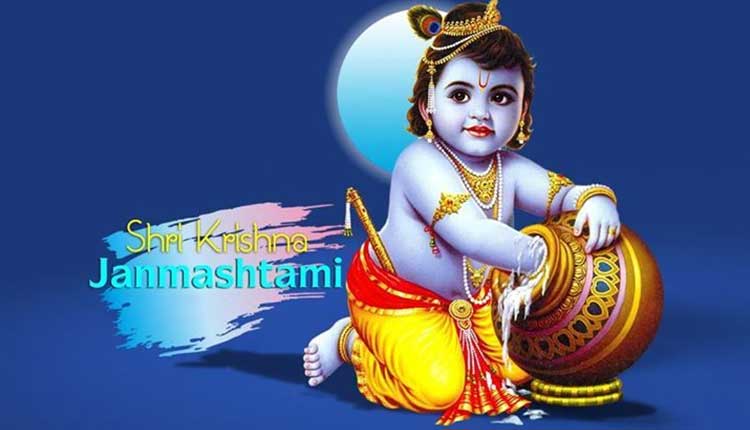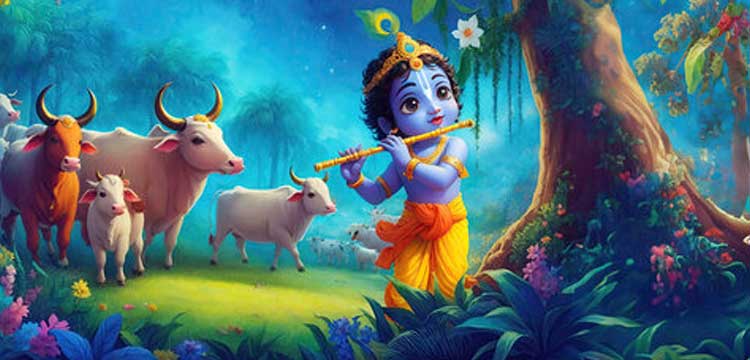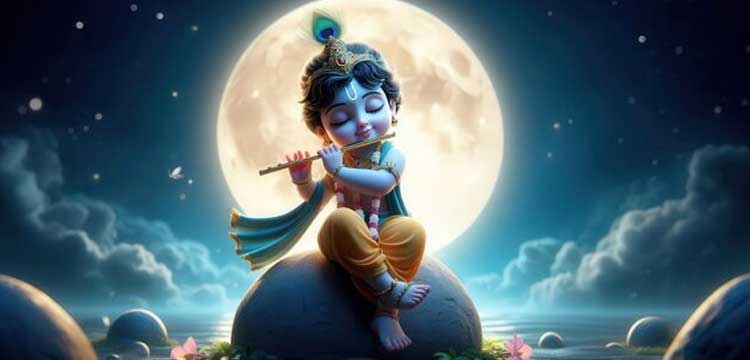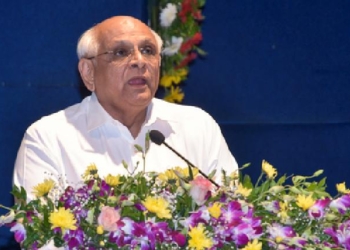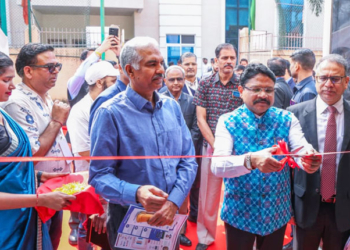Sri Krishna Janmashtami also known as Janmashtami is a vibrant and auspicious celebration that resonates with millions of devotees across the globe. This joyous festival marks the divine birth of Lord Sri Krishna, a transcendental event that occurred over 5,000 years ago.
Observed with great fervour and devotion in every parts of India, Janmashtami falls on the eighth day (Ashtami) of the waning phase of the month of Shravana.
The significance of Sri Krishna Janmashtami lies not just in its historical context but in its spiritual essence. Lord Krishna’s descent into this world is considered a sacred event, aimed at the spiritual upliftment of all living beings.
Omcom News brings to you the essence of Janmashtami, a festival that celebrates the birth of Lord Krishna with great fervour and devotion. As Janmashtami approaches, the chanting of ‘Hare Krishna Hare Rama’ resonates through the air, filling it with devotion and spiritual energy. This ancient festival is a time for devotees to come together and connect with the divine through sankirtan.
As Janmashtami arrives, the air is filled with devotion. Temples are adorned with flowers, and the sound of bhajans and kirtans echoes through the streets. The celebration of Sri Krishna Janmashtami has the profound impact of his divine presence on humanity.
In essence, Sri Krishna Janmashtami is a celebration of love, devotion, and spiritual growth. It’s a time to connect with the divine, seek guidance from the wisdom of Lord Krishna, and bask in the joy and positivity that this festival embodies.
The Birth Of Krishna
No doubt, the story of Krishna’s birth is one of the most captivating tales in Hindu mythology. According to the scriptures, Krishna was born in Mathura to Devaki and Basudeva under painful circumstances. His birth was prophesied to bring an end to the tyrant King Kansa, Devaki’s brother, who had been warned that he would be killed by his sister’s eighth son.
As Kansa imprisoned Devaki and Basudeva, the couple faced numerous adversities. However, divine intervention played a crucial role, allowing Vasudeva to escape from prison with the newborn Krishna. He took the infant to Gokul, where he was raised by Nanda and Yashoda, ensuring his safety from Kansa’s wrath. When Krishna is believed to have been born, the atmosphere is charged with devotion and excitement.
One Festival, Many Names
The regional variations in names and customs reflect the diverse ways Krishna’s life and teachings are revered. In Maharashtra, ‘Dahi Handi’ is a highlight, where devotees enthusiastically break a pot of curd, symbolizing Krishna’s playful nature. In contrast, West Bengal and Odisha celebrate ‘Nanda Utsav, emphasizing the joy and festivities in Nanda’s household, Krishna’s foster father. Gujarat worships Krishna as ‘Ranchhod’, signifying his strategic retreat during the battle of Dwarka.
Each name associated with Janmashtami holds deep cultural and spiritual significance. ‘Gokulashtami’ highlights Krishna’s idyllic childhood in Gokul, surrounded by cowherds, symbolizing simplicity and devotion. ‘Krishna Jayanti’ celebrates the divine birth of Krishna, focusing on the miraculous circumstances of his arrival. In Kerala, ‘Ashtami Rohini’ emphasizes the auspicious alignment of the Rohini Nakshatra (star) with Ashtami, considered a sacred moment for Krishna’s birth. These names enrich the festival, reflecting the profound connections between Lord Krishna and the diverse communities that celebrate him.
Lesser-Known Facts About Janmashtami
Janmashtami, a festival celebrated with great fervor across India, holds many surprises for those who delve deeper. Beyond the familiar rituals and celebrations, there are several lesser-known facts that add to the richness of this auspicious occasion.
In some regions, Janmashtami is observed as a charity day, where devotees come together to donate food, clothes, and other essentials to those in need. This selfless act reflects the compassionate and kind nature of Lord Krishna, inspiring devotees to follow in his footsteps.
Another fascinating aspect of Janmashtami is the special role accorded to animals, particularly cows. Cows are considered sacred in Hinduism. On this day, cows are adorned with flowers and worshipped, highlighting the importance of compassion and care towards all living beings.
The tradition of Rasa Lila, a dramatic re-enactment of Krishna’s youthful exploits with the Gopis (milkmaids), is a unique feature of Janmashtami celebrations in certain parts of India. This vibrant and enchanting performance brings to life the divine love and playfulness of Lord Krishna, captivating the hearts of devotees and spectators alike.




